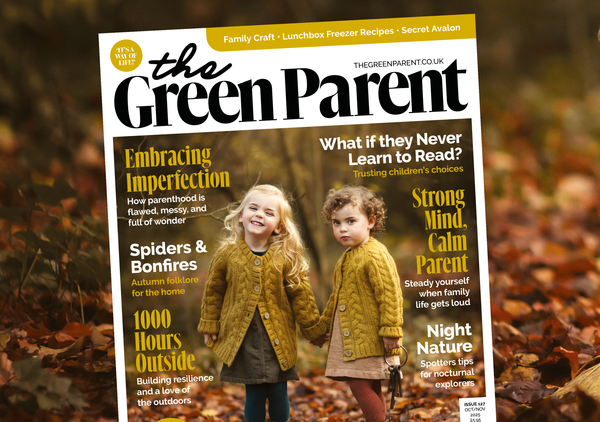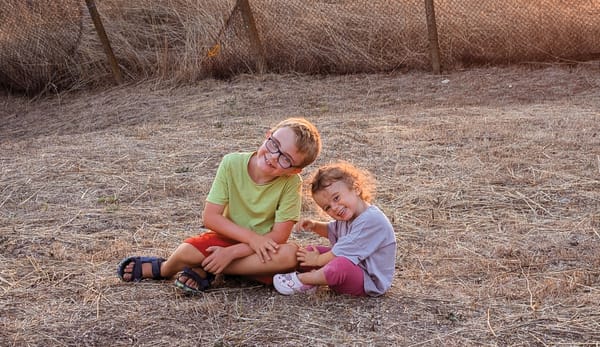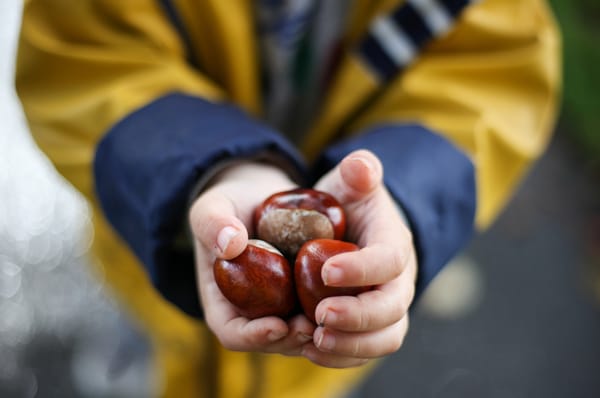For the first seven years of life children need their home and family to be their most nurturing environment. Since many young children now spend more of their waking hours away from home they need a nurturing home environment to return to more than ever says Pam Leo
Our lives today are often so hectic that many homes feel more like a home base where the family sleeps, showers, does laundry, stores their belongings, sometimes cooks and eats meals, and watches television.
Nature and Nurture
Creating nurturing environments for our children means more than meeting their physical survival needs of food, shelter and protection. Maintaining a space in which children can thrive means consciously creating warm, loving, sensory rich environments where their physical, emotional and spiritual needs are recognised, honoured, and met by their family and their community.
It is true that children “live what they learn” and they learn what they experience. Children absorb and imitate what they experience in their environment. Their exterior environment molds their interior environment. Just as area is a product of length times width, human beings are a product of nature times nurture.
Centre of the Home
In a nurturing environment, the family spends more time gathered around the table than around a screen. The family table is where the family is both nourished and nurtured.
Working on projects and school work, drinking hot cocoa, playing board games, learning to peel carrots and roll out biscuit dough, having tea parties and eating birthday cake together turns the family table into a nurturing “centre” where many of the most important and interesting things happen in the home.
Soothing Stories
A rocking chair is a wonderful piece of furniture. Whether we are soothing a baby or reading stories, rocking is nurturing to both the adult and the child. Children rarely refuse an invitation be rocked, especially if it also means hearing a story or a song. The rocking chair should be in the room where it will get the most use. We love rocking chairs so much we have one (or two) in almost every room. Outside (or in), a hammock creates another nurturing place to cuddle, read, sing, tell stories and rock.
Welcome Warmth
Gathering around a fire has always been symbolic of not just physical but emotional warmth. Children love gathering around a campfire or fireplace. Simply lighting a candle at the dinner table can create the warm feeling of gathering around the fire.
Imagine how good it feels to get out of a bath and be wrapped in a warm bath towel and dressed in warm pyjamas that have been hung by the fire.
Being in or near water is soothing to children and adults. Just filling a plastic tub with water and some empty containers provides hours of contentment for young ones. Whenever we take children to the ocean, river, pool or put them in the bath we provide a nurturing environment.
Sowing Seedlings
When we garden with children they feel connected to the earth and nature. Children need to touch the earth and feel connected to living things. They love to dig in the dirt, plant seeds and seedlings and watch them grow.
Even if we don’t have space for a garden, or know the first thing about it, we can still give our children the nurturing experience of gardening. We can put a seed in a jar of soil, transplant marigolds into a window box, plant a tree on a child’s birthday or measure and record the amazing daily growth of an amaryllis during the holidays.
Caring for Creatures
Most children dream of having a pet to love and care for. I once read; “it is a good thing for children to have animals to care for. It reminds them that they are not the only living creatures on the earth.”
It is not necessary to have a pet though, children love to feed the ducks, the birds and squirrels in the park. Hanging a birdfeeder where children can watch it through the window is a great way to give children a connection to nature.
And if our living situation does not allow pets, we can provide children with access to animals through friends, relatives, neighbours and animal charities in your local community.
Part of creating nurturing environments is spending time with our children in nurturing places. With everyone in the family so often going in different directions, it is important that families have places to go together. The local library provides the family with more than books. When we go to the library and attend story hours and special activities, it becomes a nurturing environment for our children.
For many families their place of worship provides a nurturing environment. One of my favourite places to go is the Family Dance in Yarmouth, Massachusetts, USA. The dances are taught and parents and children can learn them together. There is live music and children dance with their parents and siblings and other families. Later, there is a pot-luck dinner for all the hungry dancers. Parents have as much fun as the children do; it’s great exercise, and provides a wonderful opportunity to experience community.
Creating Community
As children get older they have a greater need for the nurturing of community. Parenting never used to be, and was never intended to be, a one or two person job. It does take a village to raise a child. Since the majority of us no longer live in villages providing a community for our children is vital to creating a nurturing environment.
When we create opportunities for children to spend time with people who play musical instruments, tell stories, dance, sing, paint, garden, cook, sew, knit and build things, we provide space for their imagination, creativity, and self-esteem.
Reviving Ritual
Another important aspect of family life is ritual. If we grew up in an environment where rituals were upheld and respected we are more likely to perpetuate rituals in our own family. However, even if we don’t recall many rituals we can create new ones.
You might like to light a candle at the dinner table, read at bedtime, enjoy pizza and games on Friday night, pick apples in autumn and carve pumpkins at Halloween.
Daily, weekly and seasonal rituals give children a sense of security, stability, and belonging. These family rituals become an anchor for children as they navigate their way through a world filled with inconsistency and uncertainty.
One of the reasons children love Christmas so much is all the nurturing rituals that accompany it. The things we do with our children give them more than anything we can ever buy for them.
Decorating our home, preparing special foods, making gifts of love, and attending special services, gatherings, and performances together are all affirming activities. When we learn to incorporate all the nurturing elements of the festive season into our daily lives we can keep the spirit of the holidays alive in our hearts and our homes all year.
MORE INSPIRATION
Seven Times the Sun: Guiding Your Child Through the Rhythms of the Day by Shea Darian
Beyond the Rainbow Bridge: Nurturing Our Children from Birth to Seven by Pamela Bradley and Barbara Patterson
The Children’s Forest by Dawn Casey, Anna Richardson and Helen D'Ascoli
Connection Parenting by Pam Leo
Roots Shoots Buckets & Boots by Sharon Lovejoy







